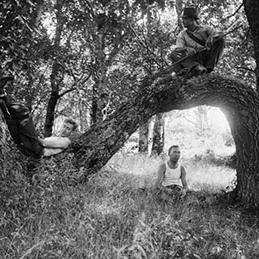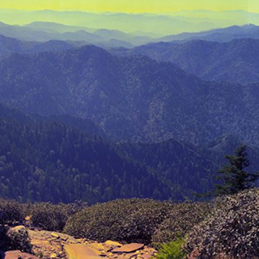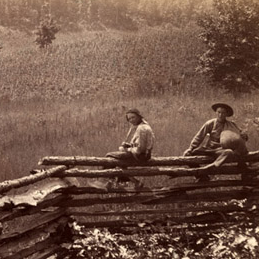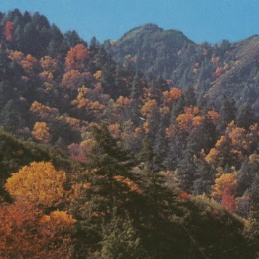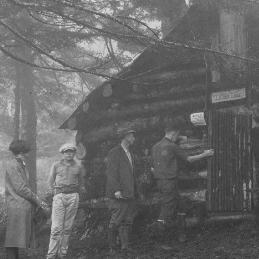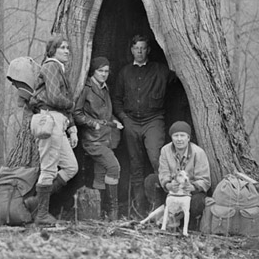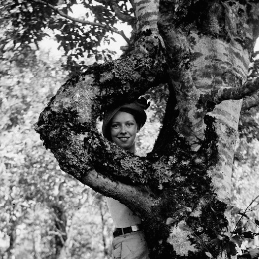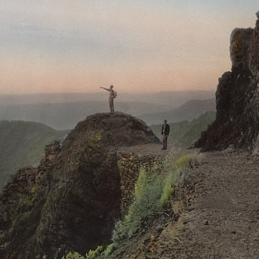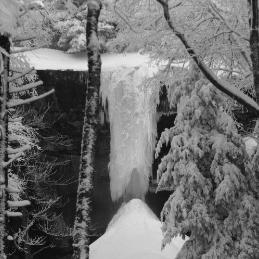Browse
Chemical Flux During Event Stormwater Flows in the Great Smoky Mountains National Park: Comparison of Two Streams Varying by Drainage Area and Elevation In Environmental Engineering. Knoxville: University of Tennessee, 2014.
Chemical and Mineralogic Variations During Prograde Metamorphism in the Great Smoky Mountains of North Carolina-Tennessee. Chapel Hill, NC: University of North Carolina, 1968.
Changes in Fire Regimes and the Successional Status of Table Mountains Pine (Pinus pungens Lamb.) In the Southern Appalachians, USA. Knoxville, TN: University of Tennessee, 2002.
A Census of a Breeding Bird Population in a Virgin Spruce-fir Forest on Mt. Guyot, Great Smoky Mountains National Park In Zoology. Knoxville, TN: The University of Tennessee, 1968.
Capitalizing on Appalachia: Resisting Colonization and Exploitation in the Works of Ron Rash and Fred Chappell In English. Vol. PhD. Indiana University of Pennsylvania , 2014.
Biodiversity and Behavior of Selected Endosystmbiotes and Hematophagous Files (Diptera) in the Southern Appalachian Mountains, U.S.A., Edited by Peter H. Adler. Clemson, SC: Clemson University, 2003.
An Assessment of Wildfire Vulnerability in Western North Carolina, USA Following the 2016 Wildfires In Department of Geography and Planning. Vol. Master of Arts. Appalachian State University, 2018.
Timber Trees and Forests of North Carolina In The North Carolina Geological and Economic Survey Bulletin. Winston, NC: North Carolina Geological and Economic Survey, 1897.
A Survey of Radial Growth Trends in Spruce in the Great Smoky Mountains National Park as Influenced by Topography, Age, and Stand Development. Oak Ridge National Laboratory: U.S. Department of Energy, 1990.
Studies of the European Wild Boar in the Great Smoky Mountains National Park, Part II, Seasonal Food Habits In First Annual Report, Part II to the Superintendent. Gatlinburg, TN: U.S. Department of the Interior, National Park Service, Southeast Regional Office, 1978.
Studies of European Wild Boar in the Great Smoky Mountains National Park, Part II: Seasonal Food Habits In Report to the Superintendent. U. S. Department of the Interior, National Park Service, Southeast Regional Office, 1978.
Soil Survey of Sevier County,Tennessee. United States Department of Agriculture, 1945.
Report on the Fire Control Training Conference (Fire School) Held at Sugarlands Camp NP-2, Great Smoky Mountains National Park, June 4-6, 1936. Gatlinburg, TN: U.S. Department of the Interior, National Park Service, 1936.
Report of Phase I Archaeological Survey, Proposed Locations for the Construction of a New Visitor’s Center, Cades Cove, Great Smoky Mountains National Park, Blount County, Tennessee. Knoxville, Tenn.: MACTEC Engineering and Consulting, Inc., 2005.
Progress Report: Evaluation of Laricobius Pilot Test, 1963. Asheville, NC: U.S. Department of Agriculture, Forest Service, 1963.
Preliminary Report on Archaeological Survey of the John Oliver Cabin and the Tipton Oliver Home, Cades Cove. Knoxville, Tenn.: The University of Tennessee, 2005.
Phase II Archaeological Testing of Sites 40SV105 and 40SV112 Located Along Greenbrier Road, Sevier County, Tennessee. Louisville, KY: AMEC Earth and Environmental, Inc., 2004.
Interactive Effects of Natural and Anthropogenic Factors on Growth and Physiology of Southern Red Spruce. Environmental Sciences Division, Oak Ridge National Labratory and Phyton Technologies, Oak Ridge, Tenn., 1987.
Historical Overview of Fisheries Studies and Sport Fisheries Monitoring Plan for Great Smoky Mountains National Park. Prepared in cooperation with Western Carolina University, Cullowhee, NC., and Uplands Field Research Laboratory, Great Smoky Mountains National Park, Gatlinburg, TN: National Park Service, 1984.
Great Smoky Mountains National Park-Master Plan, Historical Input. Gatlinburg, TN: Great Smoky Mountains National Park, 1974.
The Great Smoky Mountains National Park: Its Use as a Natural Laboratory for General Biology., 1987.
The Great Smoky Mountains National Park: Its Use as a Natural Laboratory for General Biology., 1987.
Geovisualization of Forest Dynamics: Hemlock Woolly Adelgid Damage in Great Smoky Mountains National Park. Athens, GA: Center for Remote Sensing and Mapping Science, Department of Geography, University of Georgia, 2009.
Food Availability, Reproduction, and Conditions of European Wild Boar in Great Smoky Mountains National Park In Research/Resources Management Report. Gatlinburg, TN: Uplands Field Research Laboratory, 1981.
Final Report: Southeastern Aerosol and Visibility Study In SEAVS. Great Smoky Mountains National Park: National Park Service, Electric Power Research Institute, 1995.













